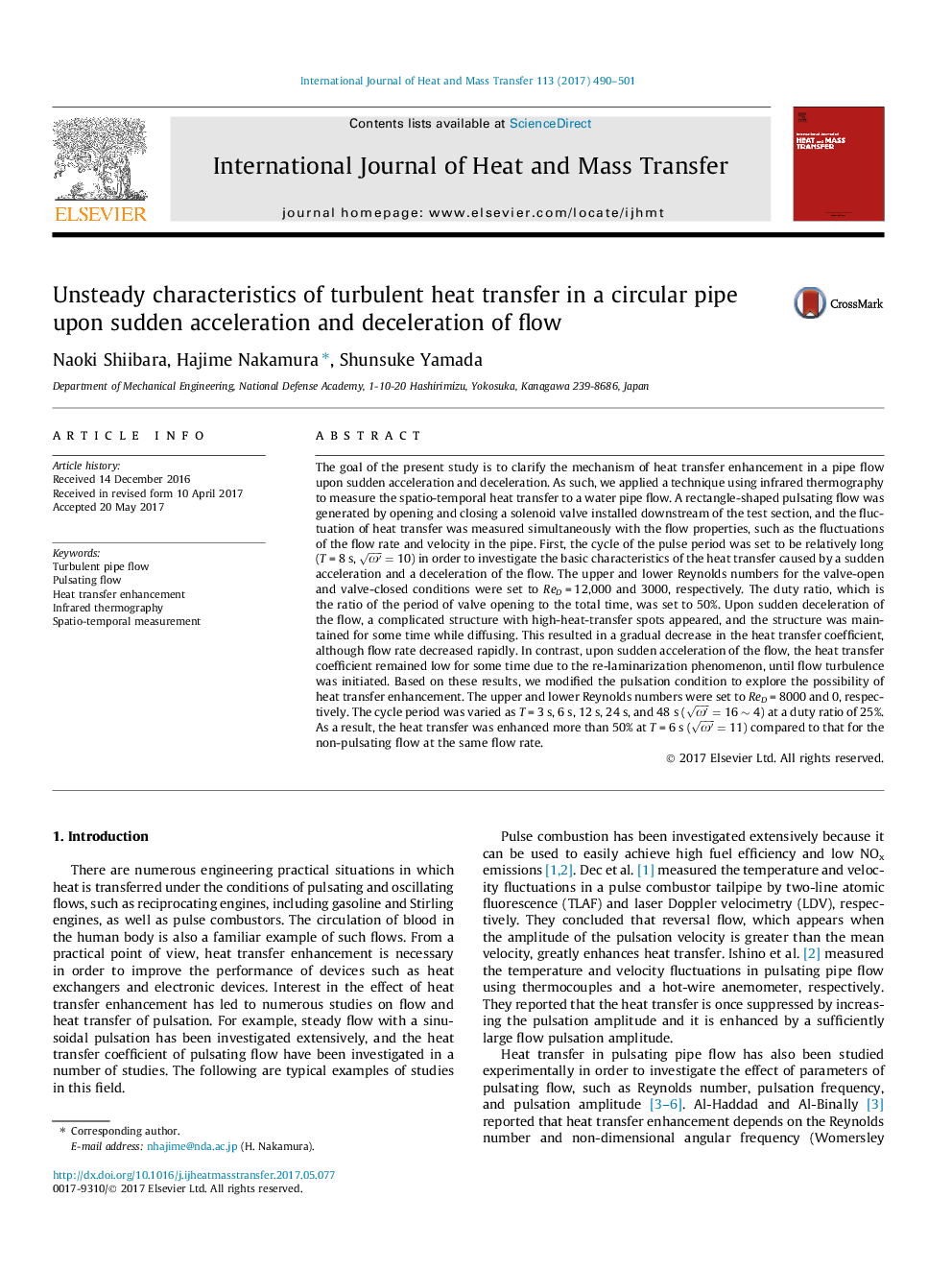| کد مقاله | کد نشریه | سال انتشار | مقاله انگلیسی | نسخه تمام متن |
|---|---|---|---|---|
| 4994193 | 1458028 | 2017 | 12 صفحه PDF | دانلود رایگان |
عنوان انگلیسی مقاله ISI
Unsteady characteristics of turbulent heat transfer in a circular pipe upon sudden acceleration and deceleration of flow
ترجمه فارسی عنوان
خصوصیات ناپایدار انتقال گرما آشفته در یک لوله دایره ای پس از شتاب ناگهانی و کاهش سرعت جریان
دانلود مقاله + سفارش ترجمه
دانلود مقاله ISI انگلیسی
رایگان برای ایرانیان
کلمات کلیدی
جریان لوله متلاطم، جریان پویا افزایش انتقال حرارت، ترموگرافی مادون قرمز، اندازه گیری اسپکتیو زمانی،
موضوعات مرتبط
مهندسی و علوم پایه
مهندسی شیمی
جریان سیال و فرایندهای انتقال
چکیده انگلیسی
The goal of the present study is to clarify the mechanism of heat transfer enhancement in a pipe flow upon sudden acceleration and deceleration. As such, we applied a technique using infrared thermography to measure the spatio-temporal heat transfer to a water pipe flow. A rectangle-shaped pulsating flow was generated by opening and closing a solenoid valve installed downstream of the test section, and the fluctuation of heat transfer was measured simultaneously with the flow properties, such as the fluctuations of the flow rate and velocity in the pipe. First, the cycle of the pulse period was set to be relatively long (TÂ =Â 8Â s, Ïâ²=10) in order to investigate the basic characteristics of the heat transfer caused by a sudden acceleration and a deceleration of the flow. The upper and lower Reynolds numbers for the valve-open and valve-closed conditions were set to ReDÂ =Â 12,000 and 3000, respectively. The duty ratio, which is the ratio of the period of valve opening to the total time, was set to 50%. Upon sudden deceleration of the flow, a complicated structure with high-heat-transfer spots appeared, and the structure was maintained for some time while diffusing. This resulted in a gradual decrease in the heat transfer coefficient, although flow rate decreased rapidly. In contrast, upon sudden acceleration of the flow, the heat transfer coefficient remained low for some time due to the re-laminarization phenomenon, until flow turbulence was initiated. Based on these results, we modified the pulsation condition to explore the possibility of heat transfer enhancement. The upper and lower Reynolds numbers were set to ReDÂ =Â 8000 and 0, respectively. The cycle period was varied as TÂ =Â 3Â s, 6Â s, 12Â s, 24Â s, and 48Â s (Ïâ²=16â¼4) at a duty ratio of 25%. As a result, the heat transfer was enhanced more than 50% at TÂ =Â 6Â s (Ïâ²=11) compared to that for the non-pulsating flow at the same flow rate.
ناشر
Database: Elsevier - ScienceDirect (ساینس دایرکت)
Journal: International Journal of Heat and Mass Transfer - Volume 113, October 2017, Pages 490-501
Journal: International Journal of Heat and Mass Transfer - Volume 113, October 2017, Pages 490-501
نویسندگان
Naoki Shiibara, Hajime Nakamura, Shunsuke Yamada,
